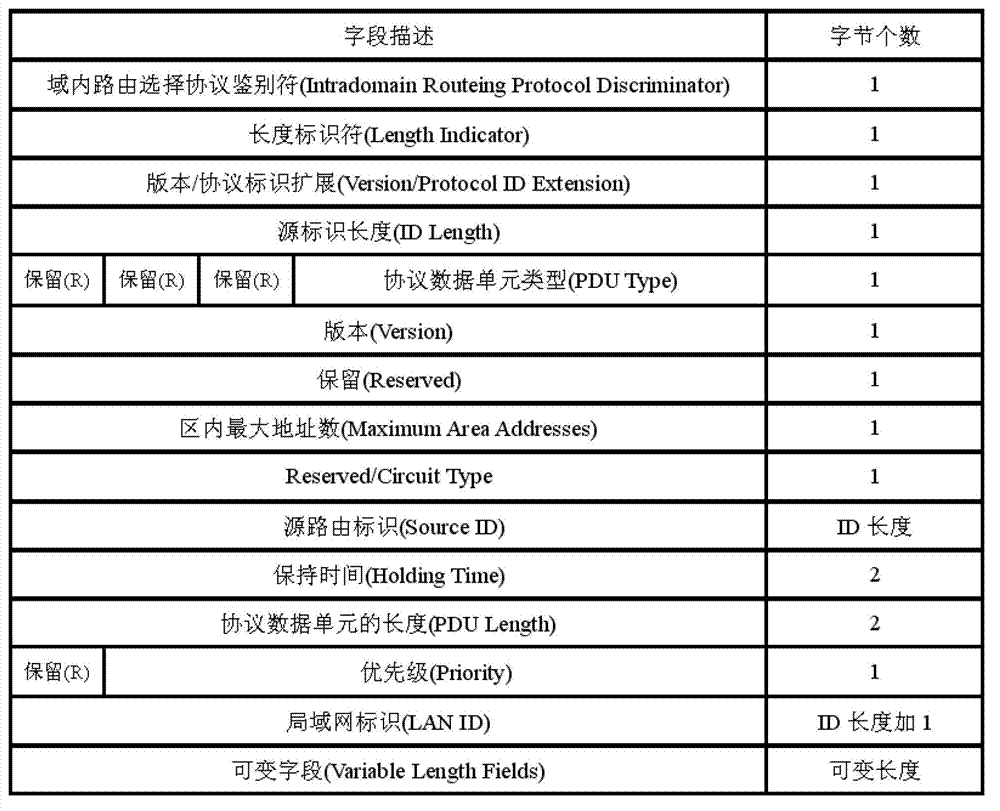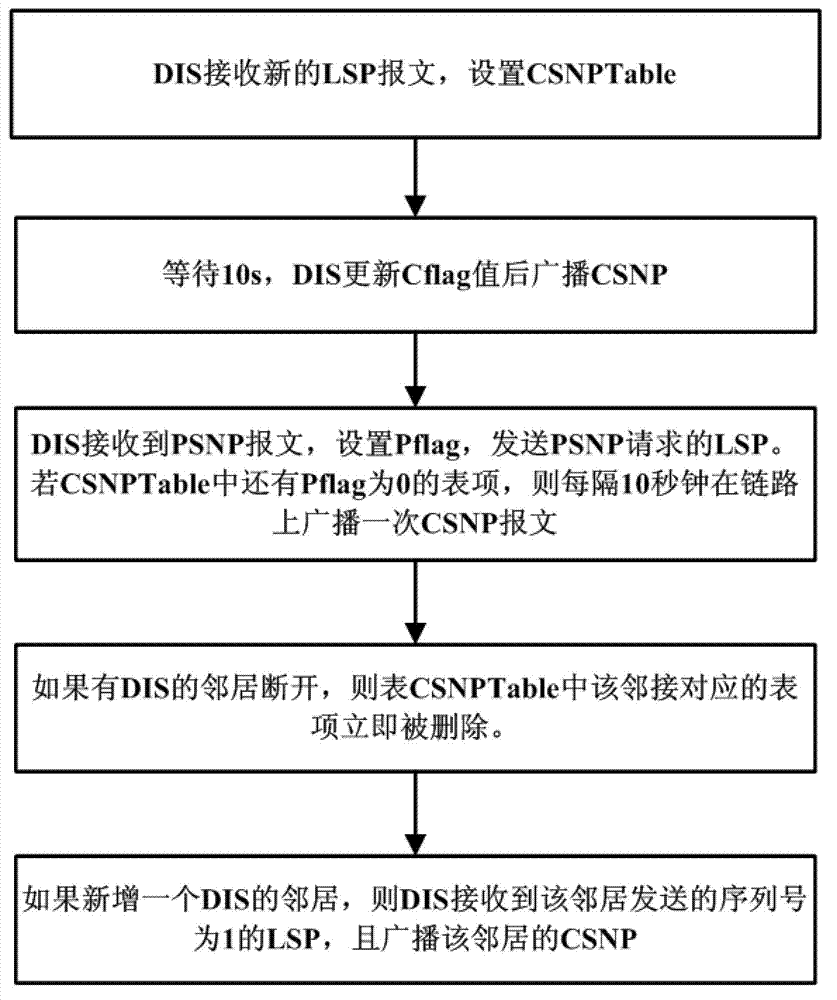Method for improving CSNP (complete sequence number protocol data unit) message broadcast efficiency in IS-IS (intermediate system-to-intermediate system intra-domain routing information exchange protocol)
A technology of message broadcasting and routing protocol, applied in digital transmission systems, electrical components, transmission systems, etc., can solve the problems of large protocol messages, consume network bandwidth, increase network bandwidth load, etc., so as to reduce bandwidth occupation and reduce the number of transmissions. , the effect of improving broadcast efficiency
- Summary
- Abstract
- Description
- Claims
- Application Information
AI Technical Summary
Problems solved by technology
Method used
Image
Examples
Embodiment Construction
[0028] see figure 1 , a method for improving the broadcast efficiency of CSNP messages in the IS-IS routing protocol. After the DIS in the broadcast network is elected, a variable Time is set by itself, and the variable Time is initialized and cleared. The variable Time is used to record the time when a new LSP indicating a network topology change is received.
[0029] figure 2 In , the variable Time changes with time and network topology. When the DIS receives a new LSP1 representing a network topology change at time X, it immediately updates its own LSP database, and sets the variable Time to the current time X at the same time. In the next 10 seconds, the DIS receives 4 new LSP packets, but because the time X has been set for Time, the variable Time is no longer set. After a delay of 10 seconds, send the CSNP message and clear the variable Time.
[0030] If the DIS does not receive a new LSP packet within 10 seconds, it sends a specific Hello packet to all neighbors t...
PUM
 Login to View More
Login to View More Abstract
Description
Claims
Application Information
 Login to View More
Login to View More - R&D
- Intellectual Property
- Life Sciences
- Materials
- Tech Scout
- Unparalleled Data Quality
- Higher Quality Content
- 60% Fewer Hallucinations
Browse by: Latest US Patents, China's latest patents, Technical Efficacy Thesaurus, Application Domain, Technology Topic, Popular Technical Reports.
© 2025 PatSnap. All rights reserved.Legal|Privacy policy|Modern Slavery Act Transparency Statement|Sitemap|About US| Contact US: help@patsnap.com



